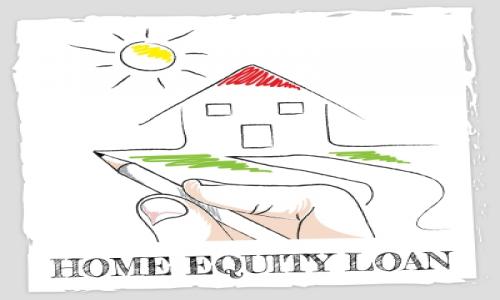There are basically two types of home equity loans: a home equity loan (HEL) or a home equity line of credit (HELOC). Since the debt is secured by your home, the interest rate is typically less than that of a credit card or personal loan. Also, the interest paid on the loan may be tax deductible. (Always check with your tax or financial advisor before making any tax-related decisions).
Home Equity Loan (HEL)
A home equity loan, also referred to as a second mortgage, is best used in situations where you intend to use the funds for a specific purpose, like home improvements or a car purchase. The interest rate and the monthly payments are fixed. These get paid back in installments over a fixed period of time, typically 5-15 years. While the time to repay a loan is shorter than that of a traditional mortgage, borrowers like the certainty of having a fixed rate and fixed monthly payments.
Home Equity Line of Credit (HELOC)
A home equity line of credit is a revolving line of credit that allows you to access the funds as you need, instead of all at once. The interest rate is variable and in most cases tied to prime. The rate for which you qualify is usually based on your creditworthiness and your ability to repay the loan.
Advantages and disadvantages of using each type of loan
Knowing when to use which type of loan depends on your specific circumstances. If you have a long term remodeling project which requires cash installments over time, then a line of credit makes sense. If your home needs a major upgrade and you are making one large payment, then the stability of a home equity loan may be a better choice.
| HEL (Home Equity Loan) | HELOC (Home Equity Line of Credit |
| Fixed interest rate. Although you pay interest on the entire borrowed amount, your rate is locked in if rates swing upward. | Variable interest rate. You pay interest on the amount you access from your line of credit, rather than the entire loan amount. |
| Attractive interest rates (lower than credit cards or personal loans). | Attractive interest rates (lower than credit cards or personal loans). |
| Loan interest may be tax-deductible. | Loan interest may be tax-deductible. |
| There is one lump sum of money borrowed. | Access to money as you need it. |
| Set monthly payments make it easier to estimate your expenses. | As you borrow more, the minimum repayment will increase. However, interest-only repayment options are available. |
| Can link into a relationship banking product to receive rate discounts, free services, or added benefits. | Can link into a relationship banking product to receive rate discounts, free services, or added benefits. |
| HEL (Home Equity Loan) | HELOC (Home Equity Line of Credit |
| Required to borrow the entire amount upfront whether used or not. | Knowing money is available at any time can be tempting. |
| Fixed payments can take up to 15 years to repay | Variable interest rate could adjust upward. |
| There are usually fees that add costs to the loan amount. | There are usually fees that add costs to the loan amount. |
| Repayment of interest and principal begins as soon as you receive the money. | Interest-only repayment options are available from most lenders. |
| If you cannot repay or refinance the loan, then you may be forced to sell or lose your home. | If you cannot repay or refinance the loan, then you may be forced to sell or lose your home. |
While the advantages for both types of loans may sound appealing, carefully evaluate whether the benefits each has to offer is worth incurring the additional debt. Compare home equity rates.















Comments
Jonetta
January 12, 2011
auto insurance quotes ysdcm cheap auto insurance xqhjdu buy car insurance online >:-O propecia =)))
Is this review helpful? Yes:6 / No: 4
jamie
August 17, 2013
Many homeowners like a fixed rate home equity loan, especially when rates are low, because they can plan their budgets better and not be surprised by higher payments due to their loan adjusting upward.
Is this review helpful? Yes:7 / No: 3
Add your Comment
or use your BestCashCow account